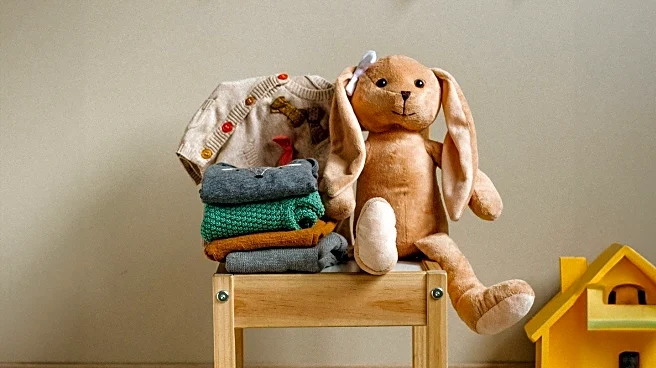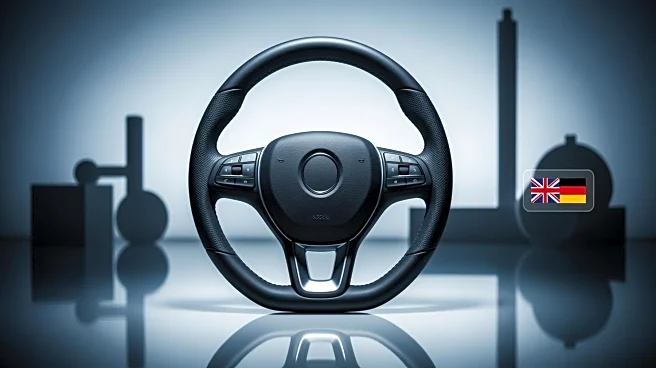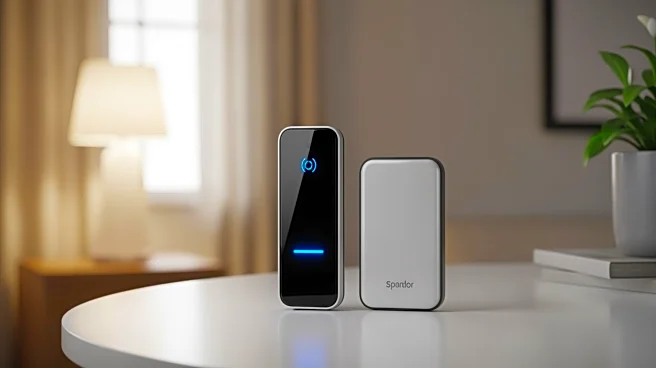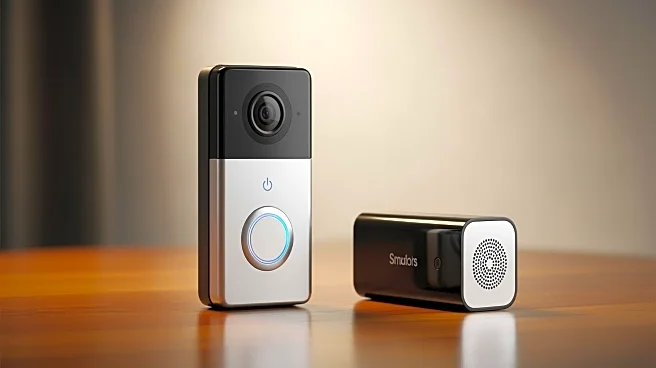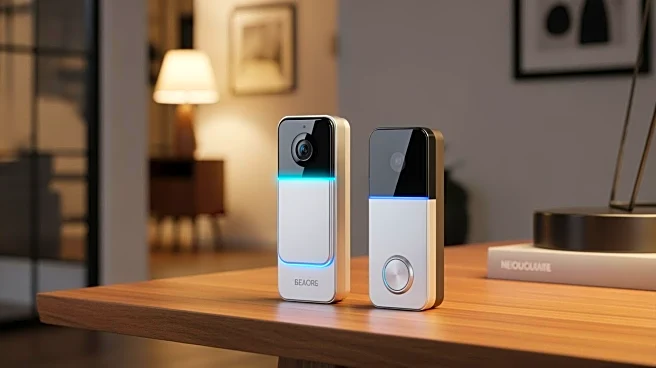What's Happening?
Heated slippers have emerged as a popular winter accessory, providing warmth and comfort to users. These slippers, available in women's sizes 4-11, feature a plush lining and a solid, thick sole, making
them suitable for both indoor and short outdoor use, such as trips to the mailbox. The slippers come equipped with individual battery packs and a heat level switch offering three warmth settings. Reviews highlight their effectiveness in keeping feet warm, with some users noting the slippers' ability to maintain warmth even after being turned off. The product is currently available at a discounted price of $49.99 with a coupon, down from the regular price of $69.99.
Why It's Important?
The introduction of heated slippers addresses a common discomfort during colder months, particularly for individuals who suffer from conditions like neuropathy, which can cause cold sensitivity in extremities. By providing a reliable source of warmth, these slippers enhance comfort and potentially improve quality of life during winter. The product's popularity also reflects a growing consumer interest in innovative solutions for personal comfort, which could influence market trends in winter apparel and accessories. Retailers may see increased demand for similar products, prompting further innovation and competition in the sector.
What's Next?
As the winter season progresses, it is likely that demand for heated slippers and similar products will increase. Retailers may expand their offerings to include a wider range of heated apparel, potentially leading to advancements in battery technology and material design to enhance product performance. Consumer feedback will play a crucial role in shaping future iterations of these products, with manufacturers possibly addressing current limitations, such as the visibility of the power button. Additionally, the success of these slippers could inspire other companies to enter the market, increasing competition and potentially driving down prices.
Beyond the Headlines
The popularity of heated slippers highlights a broader trend towards personalized comfort solutions in consumer products. This trend may extend beyond winter apparel, influencing the design of everyday items to incorporate features that enhance user experience. The focus on comfort and convenience could lead to innovations in other sectors, such as home goods and travel accessories. Furthermore, as consumers become more accustomed to such features, expectations for product functionality and versatility may rise, challenging manufacturers to continuously innovate.
